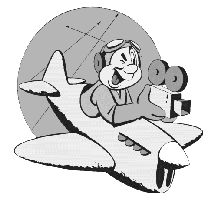Welcome to a tribute to the men of the 16th Combat Camera Unit; who they were, what they did, where they went while assigned to Fourteenth Air Force, in China during World War II. The unit included photo lab technicians, equipment repairmen, sound technicians and supply and administrative clerks as well as the photographers and cinematographers. All of whom served with expertise, dedication and honor.
Types of Combat Photographers
(told by Al Saldarini, 1st CCU attached 450th Bm Gp, 15th AF)
There were several types of combat photographers; still, mosaic and motion picture photographers.
- The still photographer documented action in the air and on the ground. Bomb Group level photographers did the same with the additional duty of taking photos of bomb strikes.
- The mosaic photographer did the mapping photos wherein many photographs, taken at regular intervals, were meticulously joined together to form a composite map. Maps, as you knew them started this way.
- The motion picture photographer, or cinematographer, was similar to a newsreel photographer, utilizing motion picture cameras to document the war. The films were put to use as propaganda, training, documentary and combat evaluation motion pictures.
Combat cameramen suffered the highest percentage of casualties of ANY service in World War II. Nevertheless they were not well-liked, often thought to be "in the way", "extra baggage", and most often "bad luck". I even began to believe the latter when I photographed a crew member BEFORE a mission and he did not return.
The "bad luck" status, in our case, was mainly that the mission was NOT going to be a milk run. It was likely a tough target or a mission signaling a notable event such as an invasion, delivery of gasoline at tree-top level or the bombing of a strong pocket of resistance.
